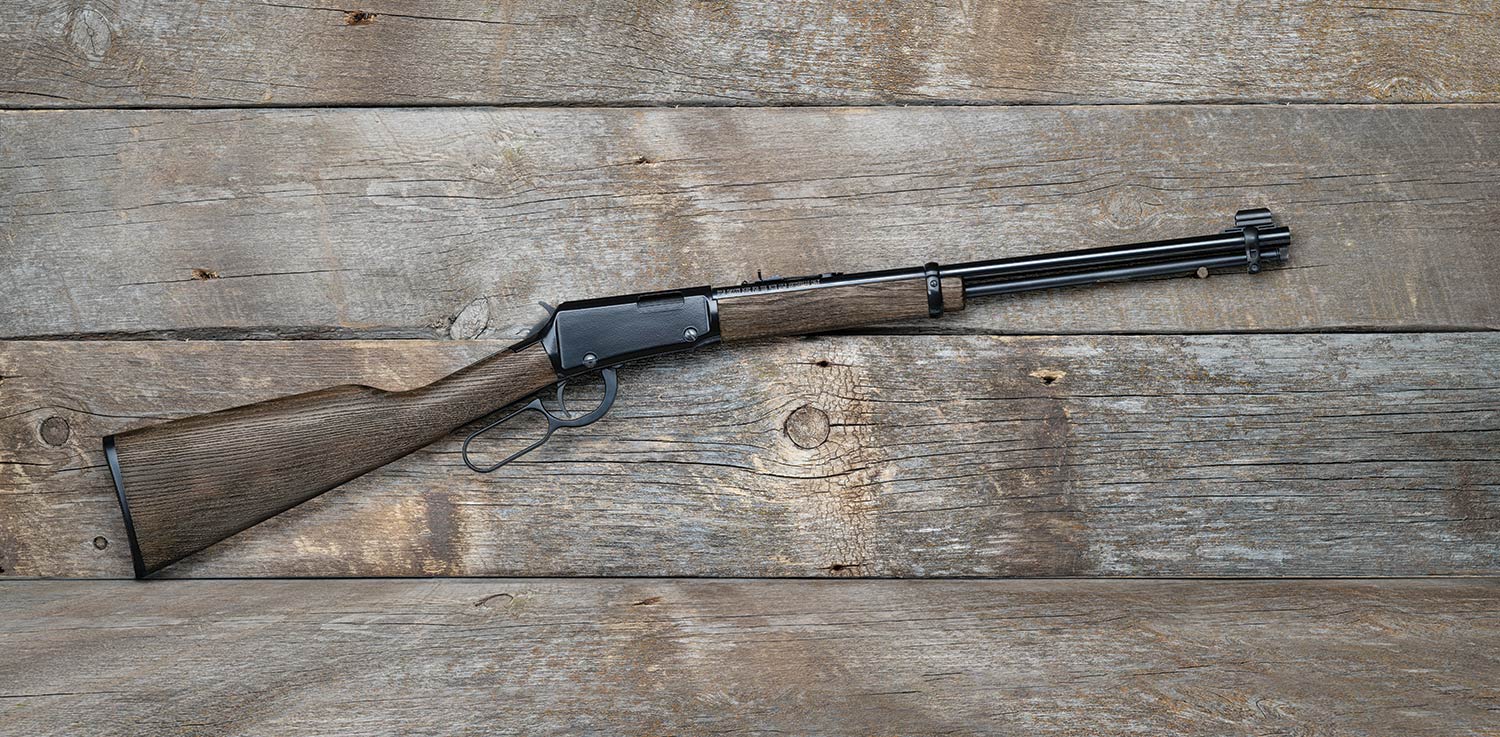We may earn revenue from the products available on this page and participate in affiliate programs. Learn More ›
This new rimfire lever action is the perfect gun for pests. I’m thinking not only of the type that raids your vegetable garden or slithers out from under the porch, but also that more persistent, pernicious, and annoying variety—namely, the youngster who keeps begging for their first real gun.
I know this species of irritant all too well, for I was that very kid, pleading with my parents to upgrade my Crossman 760 BB gun, which lacked the stopping power I required while stalking the wilds of my suburban backyard and surrounding woods.
Eventually, I did purchase a Marlin Model 60 with my own money. I don’t recall when I first dropped a rimfire shotshell down the tubular magazine of that rifle, but I vividly remember the effect that swarm of tiny pellets had on dragonflies, wasps, and grasshoppers. I had never heard the term, but that’s when I became a wingshooter.
I didn’t have a clue about this at the time, but my proto-shotgunning was hindered by a significant design issue—the rifling in my .22’s barrel.
As you probably know, when a shotshell is fired down a rifled barrel, the pattern opens rapidly, cutting the effective range of the pellets. At 15 feet, a 12-gauge shell will spray bird shot over a 4-foot area when fired through a rifled slug barrel, versus the tidy 10-inch pattern you’d get when running the same shell down a cylinder-choked smoothbore.
This is the reason that Henry skipped the rifling in the Garden Gun, going with a smooth 18 1⁄2-inch tube of blued steel instead.
To assess the difference, I shot the Henry alongside one of my favorite rimfires, a Ruger Mark IV pistol, using CCI 22 LR Shotshells, which are loaded with 31 grains of No. 12 shot.
At 10 feet, the Ruger shot tightly enough to bust a clay or reliably kill a rattlesnake or other small critter, though the pattern was noticeably less dense than those run through the Henry.
Past that distance, the pistol was pretty much worthless, while the rifle was able to break clays out to 12 yards.
As with almost every other Henry I’ve shot, the action cycled smoothly, and the rifle’s basic controls make it easy to operate. There’s no external safety on the Garden Gun. Cocking the hammer slightly—Henry calls it a one-quarter cock, but the travel required is much less than that—puts the rifle into a safe condition.
The trigger was pretty good too, especially for a rimfire that lists for $434. It has a little bit of creep and broke at an average of 3 pounds 10 ounces.
The rifle is attractively stocked with stained black ash, and the slim dimensions of the fore-end and straight grip will fit shooters with smaller hands.
Read Next: Gun Test: Henry .410 Lever Action Shotgun
The rifle comes with open sights. Up front is a simple square black post protected by a metal hood. The rear sight is a U notch on a stepped slider that adjusts elevation. The rear can be drifted in the dovetail that secures it to the barrel to adjust windage.
One drawback to the platform is that the ammo is relatively expensive by rimfire standards. Boxes of 20 shells are about $7 for the LR version.
I understand that this is a niche product—but it fills that niche rather nicely. And for backyard plinking in areas where an actual rimfire rifle would be too much gun, the Garden Gun is a great alternative.
Henry Garden Gun Specs
- Caliber: 22 LR
- Capacity: 15+1
- Weight: 5 lb. 11 oz.
- Trigger Pull: 3 lb. 10 oz.
- Barrel Length: 18.5 in.
- Overall Length: 36.5 in.
- Price: $434
- Contact: henryusa.com

